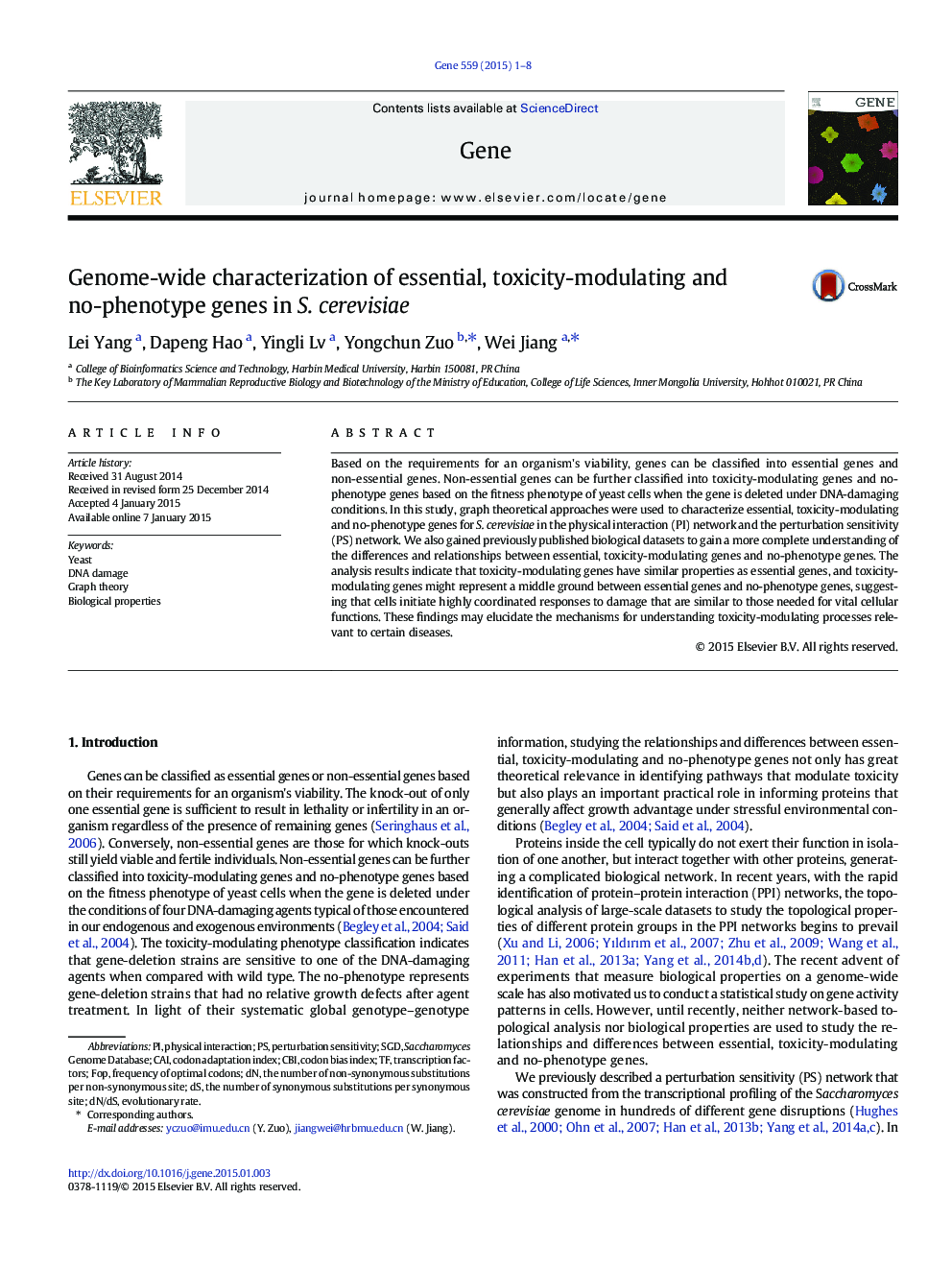| Article ID | Journal | Published Year | Pages | File Type |
|---|---|---|---|---|
| 2815955 | Gene | 2015 | 8 Pages |
•The S. cerevisiae genes are classified into essential, toxicity-modulating and no-phenotype genes.•The three gene categories are characterized by topological and biological properties.•Toxicity-modulating genes are found to represent a middle ground between essential and no-phenotype genes.
Based on the requirements for an organism's viability, genes can be classified into essential genes and non-essential genes. Non-essential genes can be further classified into toxicity-modulating genes and no-phenotype genes based on the fitness phenotype of yeast cells when the gene is deleted under DNA-damaging conditions. In this study, graph theoretical approaches were used to characterize essential, toxicity-modulating and no-phenotype genes for S. cerevisiae in the physical interaction (PI) network and the perturbation sensitivity (PS) network. We also gained previously published biological datasets to gain a more complete understanding of the differences and relationships between essential, toxicity-modulating genes and no-phenotype genes. The analysis results indicate that toxicity-modulating genes have similar properties as essential genes, and toxicity-modulating genes might represent a middle ground between essential genes and no-phenotype genes, suggesting that cells initiate highly coordinated responses to damage that are similar to those needed for vital cellular functions. These findings may elucidate the mechanisms for understanding toxicity-modulating processes relevant to certain diseases.
